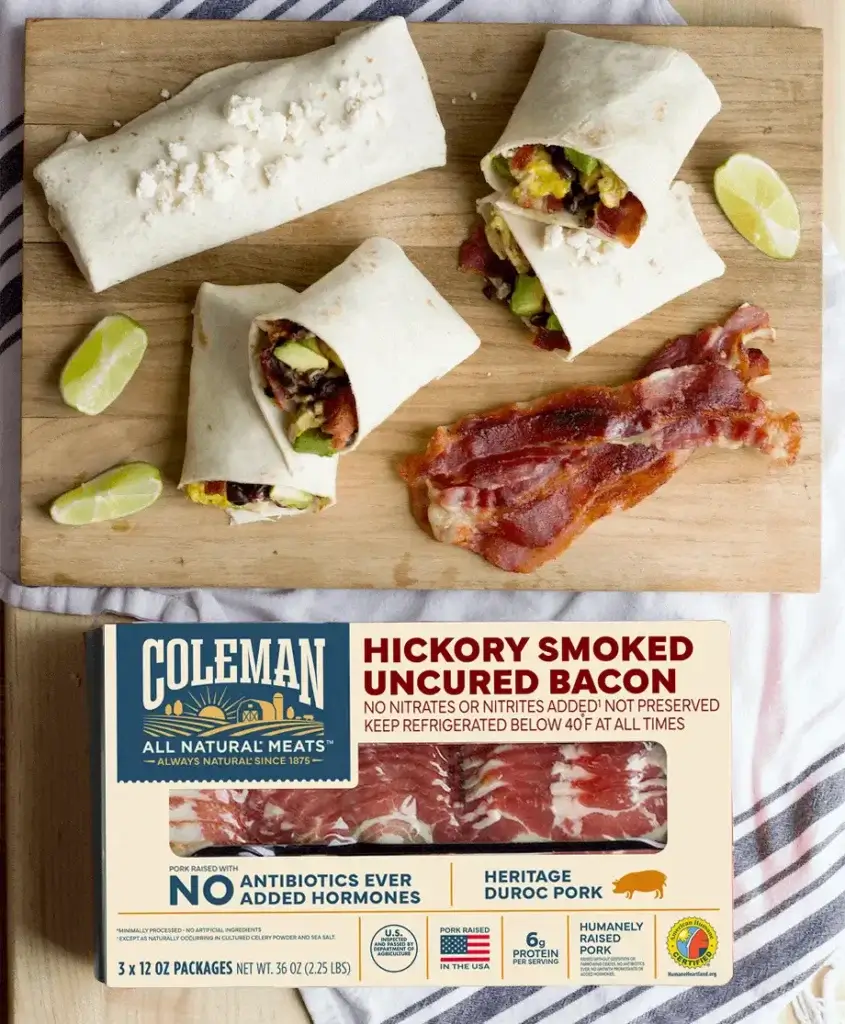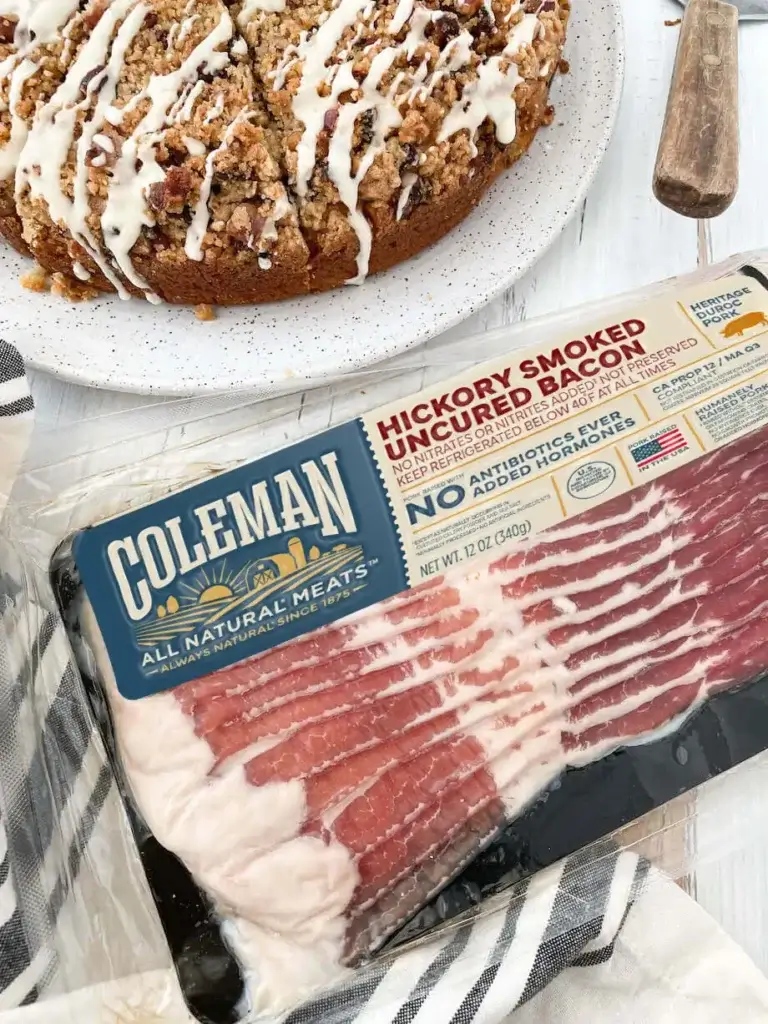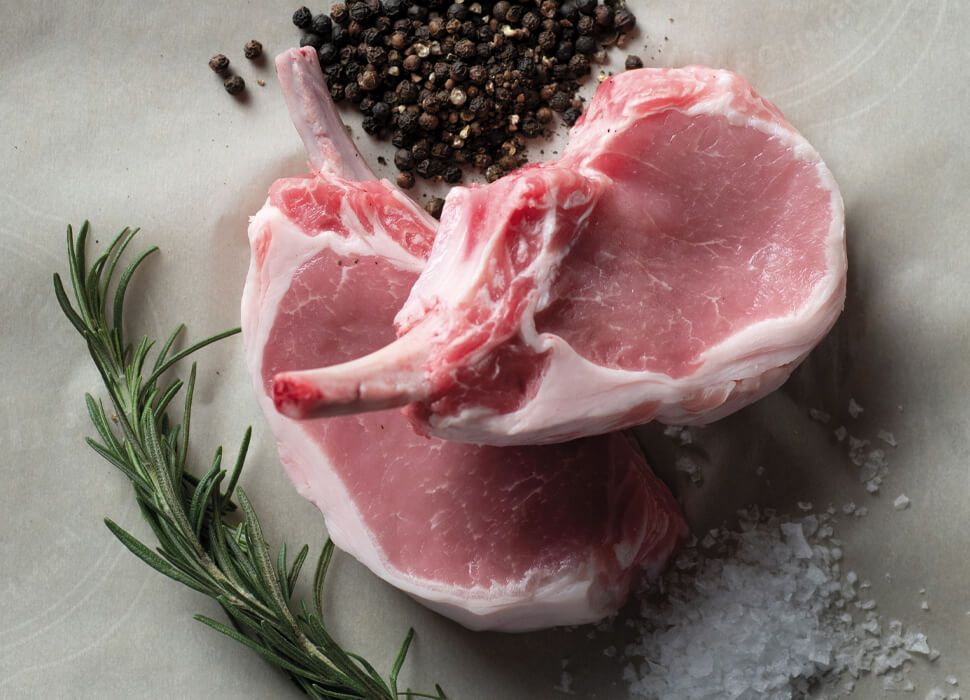Bacon has a salty flavor and crispy, satisfying texture–and Coleman Natural Hickory Smoked Uncured Bacon is a household favorite. In fact, every year, the average American consumes around 18 pounds of bacon! So it’s no surprise that it’s often devoured a day or two after you bring it home from the store or it is delivered to your doorstep.
However, sometimes your bacon might get pushed to the back of the fridge. Or perhaps you find yourself buying a bit more than your family can eat. Before long, you might be wondering whether your bacon has gone bad or is still edible.
Even though our bacon is cured with natural ingredients and smoked, with no artificial ingredients, it doesn’t stay fresh forever. To help you decide whether it’s safe to eat your bacon, we’re going to cover a bit about packaging, as well as four signs that indicate it’s time to toss your bacon.
First Thing’s First: Check the Date
Before you start inspecting strips of bacon, take a minute to check the package for a date. While the USDA doesn’t require manufacturers to label bacon with a date, many companies choose to add a “use by” or a “sell by” date.
This date may appear in a variety of formats, including the sometimes mysterious Julian date code, which utilizes a five-digit number in the format XX-XXX. The first two numbers refer to the year. For example, 24 refers to 2024. The last three digits refer to the day of the year. So 001 would correlate with January 1 and 365 would indicate December 31. So a code of 24-025 would mean January 25, 2024.
Once you’ve found the date, take note of whether it’s a “sell by” or “use by” date. Most bacon will have a “sell by” date, but a “use by” date is not completely uncommon.
So what’s the difference between the two?
A “sell by” date helps grocery managers move inventory through their stores, so you receive fresh products. If your bacon has a “sell by” date, use it within one week after the date listed, or freeze it for up to a month.
On the other hand, a “use by” date (or “best if used by” date) indicates when a product passes peak quality. The USDA advises tossing bacon that has exceeded its “use by” date.

Carefully Inspect the Packaging
Even if it’s before the “use by” or “sell by” date on your package, your bacon may still be bad. How? There might be a hole in the package or other damage that occurred on its way to the store shelf!
All dates are created with the assumption that bacon is properly vacuum sealed and stored. If air has entered into the package, the spoiling process has already started.
Before you purchase bacon, glance over the package to make sure it’s well-sealed and doesn’t show any indicators of spoilage.
Four Signs Opened Bacon Has Gone Bad
Even if you’ve bought fresh bacon and stored it properly, it won’t last forever. Here are four easy signs your refrigerated bacon may have gone bad.
1. IT DOESN’T SMELL QUITE RIGHT
Bacon shouldn’t have a strong, rancid scent. If anything, it should smell a bit smoky.
If you’re met with a sour or sulfuric odor, your bacon has likely gone bad. This stench occurs when bacteria, yeast, and fungi take hold of the bacon. The microbes may produce odors themselves or cause the bacon to release off-putting aromas.
Sometimes bacon’s distinct smoky smell can mask these odors. Therefore, when in doubt, you should also make sure to look for other signs your bacon has passed its prime.
2. IT FEELS SLIMY
Fresh bacon that’s safe to consume should feel soft, yet firm to the touch. If you go to grab some bacon and find it slimy, something has gone awry. While some may say that slime is just water leaking out of bacon, this isn’t true. Slime actually occurs when certain types of bacteria begin breaking down the meat.
If you notice that your bacon feels slimy, it’s almost certainly been colonized by bacteria. That means you should toss your bacon rather than risk sickening yourself and your family.
3. IT’S DISCOLORED
Fresh bacon should have tantalizing strips of white fat marbled with pinkish-red meat. However, this isn’t always the case with a spoiled product.
After sitting in the refrigerator for a week, you may notice your bacon has taken on a green, gray, or brown hue. Once again, this discoloration indicates bacteria and/or fungi have colonized your bacon. If you’re guessing this means it’s time to toss your bacon, you’re right!
4. IT’S MOLDY
Many bacteria, yeasts, and fungi are invisible to the naked-eyed, but some fungi can form on the surface of bacon. According to the USDA, the spores on mold are completely visible. So if you notice any type of mold or growth on the product, your bacon has definitely gone bad.
While you may be tempted to cut off the moldy spot and cook up the rest of the bacon, this isn’t recommended. If there’s anything growing visibly, there’s a good chance that fungi may exist throughout the bacon, even if you can’t see it.

How Long Is Bacon Safe to Eat After Opening?
Now that you know how to tell if your bacon has gone bad, you might be wondering how fast this happens.
As soon as you open a package of bacon, it becomes exposed to the air, and thus the bacteria and fungi lurking in the environment. Even if you reseal your bacon after opening, the initial exposure has begun the chemical reactions leading to spoilage. Therefore, you can expect open bacon to last for no longer than a week in the refrigerator, according to AllRecipes.
How Long Can You Keep Bacon in the Freezer?
- One of the best ways to keep your bacon fresh for a bit longer is by sealing it into an airtight plastic bag and popping it in the freezer.
- As long as it’s well-sealed, uncooked frozen bacon will stay tasty for up to a month.
- Technically, you can keep bacon in the freezer for over a month if stored at 0°F or lower, but you may encounter dry texture, freezer burn, and an overall decrease in quality.
If you’ve found yourself with more bacon than you can manage, try incorporating it into other dishes. Remember, bacon isn’t just a breakfast food. Corn and Bacon Chowder can be a quick weeknight meal and Air Fryer Bacon-Wrapped Sweet Potatoes are the perfect snacks for football watching or movie nights. Or if you’re in the mood for a hearty lunch that can be prepared in five minutes, you can try this delicious Herb Pork Cubano Sandwich.
“We’re just like the average consumer. We want to know where our food comes from; we want healthy, safe, delicious food and we want the animals to be raised with care and have a positive impact on the community and the environment.”
Jared Schilling, New Back 40 Family Farm
How Long Does Cooked Bacon Last?
Once you’ve opened and cooked bacon, it can last four to five days in the refrigerator, according to Southern Living. If you realize you’ve cooked more bacon than you can use in the next week, you can always freeze cooked bacon, too. Frozen, cooked bacon will keep its delicious flavor and texture for about a month.
There are also plenty of ways to use leftover cooked bacon. While it’s great as a stand-alone snack, it also shines in baked goods like Savory Bacon and Cheddar Cheese Scones, Maple Bacon Coffee Cake, and Bacon Chocolate Chip Cookies.

How to Prevent Bacon From Going Bad
When you bring home bacon, you want to be able to enjoy every last savory bit. To make this happen, be sure you store this meat product properly.
You should always store both cooked and uncooked bacon in the refrigerator or freezer. The low temperatures will slow down the growth of harmful microbes that cause spoilage, increasing bacon’s shelf life. If you’re storing cooked bacon, allow it to cool to room temperature before placing it in the fridge or freezer.
Another tip is to make sure your bacon is as airtight as possible. If you’re storing your bacon in a plastic bag, squeeze out excess air before sealing. At the very least, place your bacon in a sealed storage container.
How to Store Cooked Bacon
- Short-term storage: If you have cooked bacon that needs to be served within a few hours, it’s best to fire up the oven! Simply fire it up at 200ºF and place your cooked bacon on a center baking rack until you’re ready to devour.
- Medium-term storage: To keep cooked bacon “fresh” for four to five days, pack room-temperature bacon in a shallow, airtight bag or container and store it at 40ºF in the refrigerator.
- Long-term storage: Looking to store cooked bacon for up to a month? The freezer will likely be your best friend! Like refrigerating, remember to properly seal your room-temperature cooked bacon in an airtight bag.
What Happens If You Eat Bad Bacon?
If you accidentally eat bad bacon, you could run the risk of getting a foodborne illness. This would only occur if the bacon contains viruses, bacteria, parasites, or toxins.
With that being said, if you pay attention to the dates on the packaging, be mindful of the four signs bacon has gone bad, and choose trusted, high-quality bacon, this can reduce your chances of food poisoning.
However, if you feel any of the above symptoms after eating any type of raw meat, it’s best to contact a healthcare practitioner immediately.
All-Natural Bacon Your Entire Family Can Enjoy
When it comes time to buy your bacon, it’s best to select high-quality, natural bacon with minimal ingredients you recognize, such as Coleman Natural’s bacon products, including our Sugar-Free Applewood Smoked Uncured Bacon.
All of our uncured bacon is made from animals raised crate-free on American family farms. Our products include no antibiotics and no added hormones–which is why our bacon is classified as American Humane Certified Pork. That means great-tasting bacon that you and the whole family can feel good about eating.
Explore more articles like this:
- Bacon Buying Guide: Everything You Need to Know About Bacon
- Can You Cook Bacon in an Air Fryer?
- Is Bacon Keto?
This article was originally published on February 4, 2022, and has since been updated.


